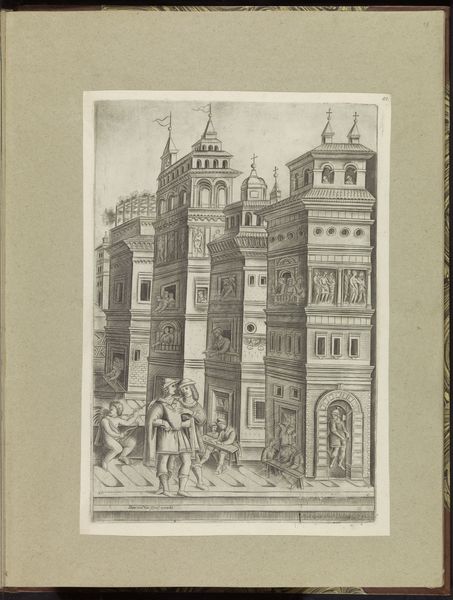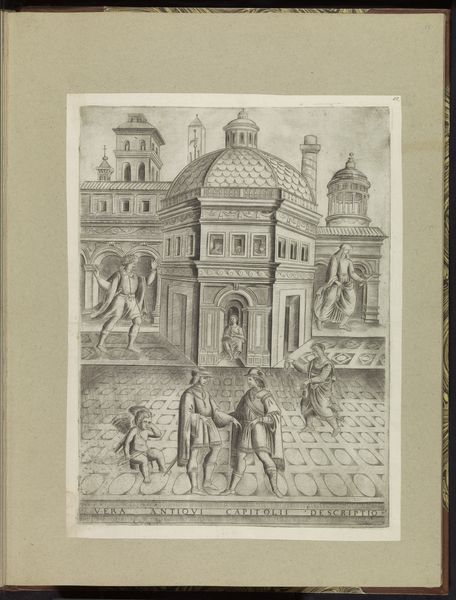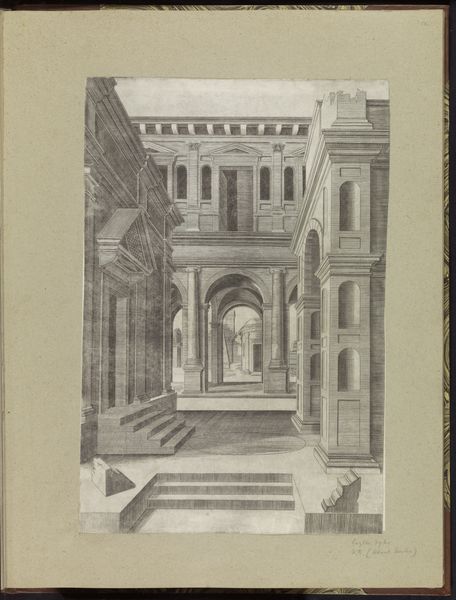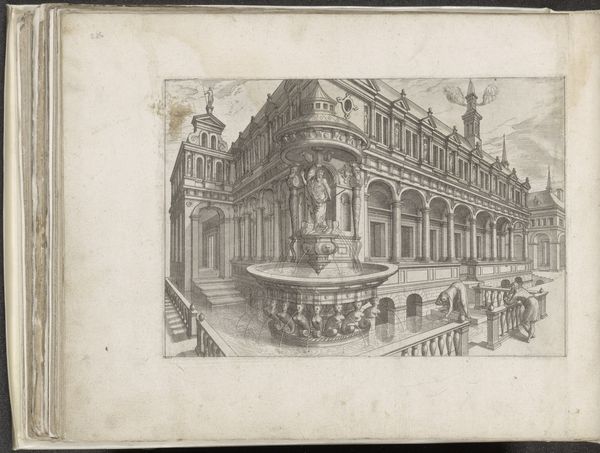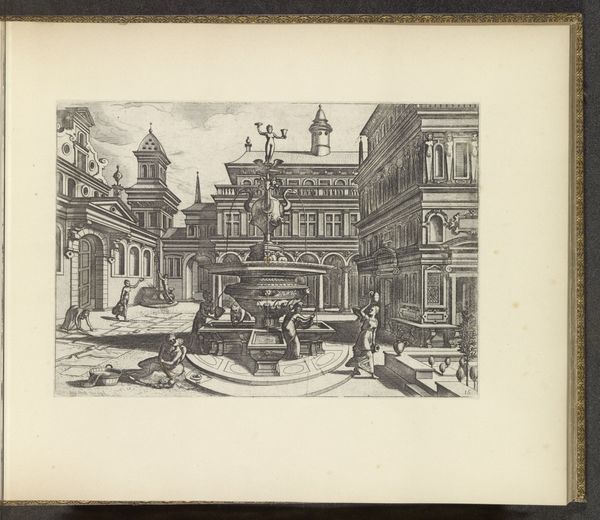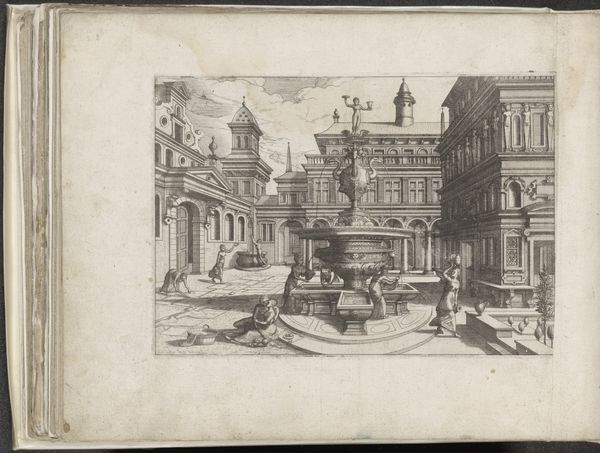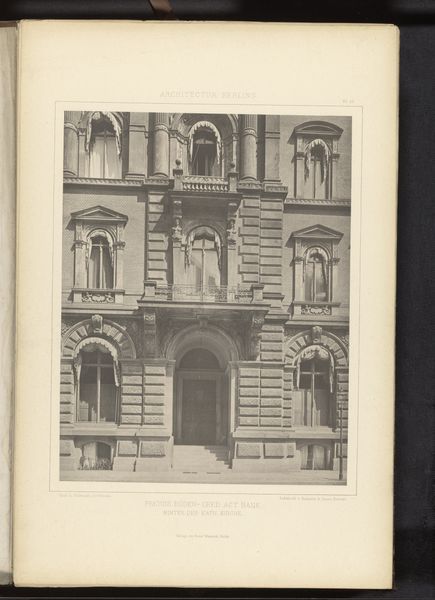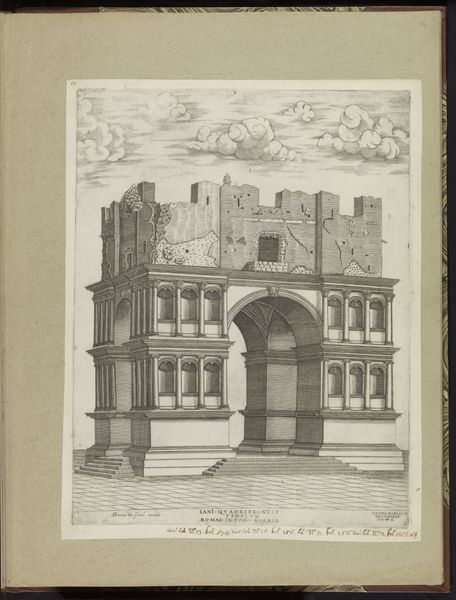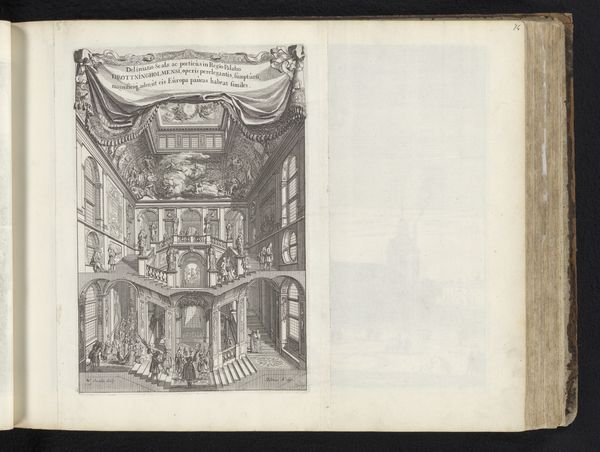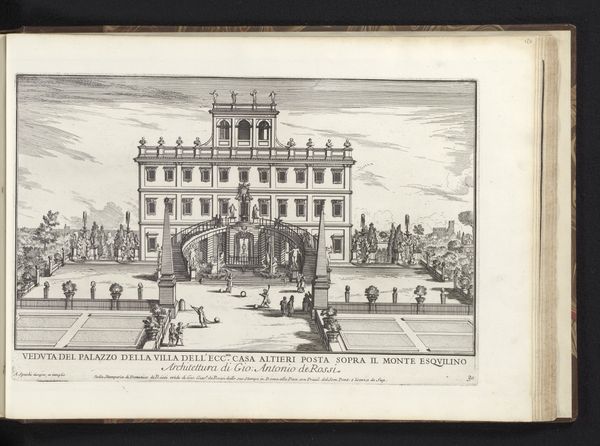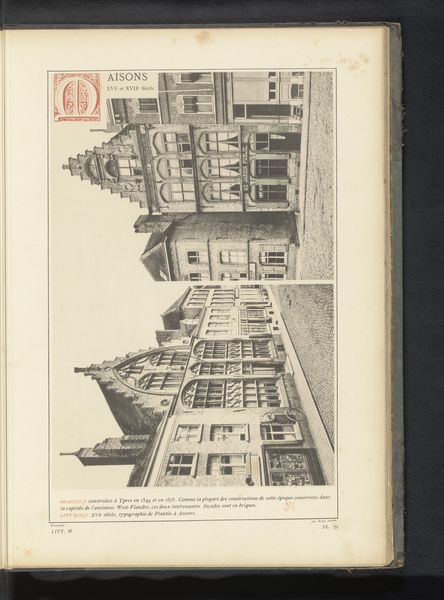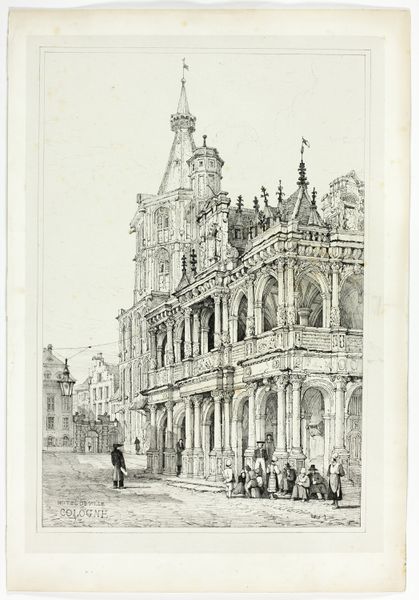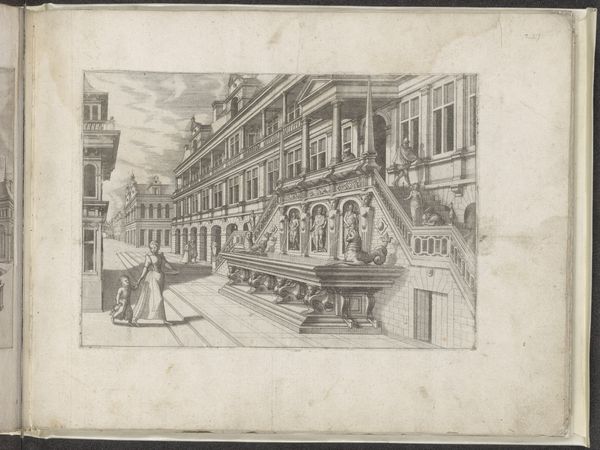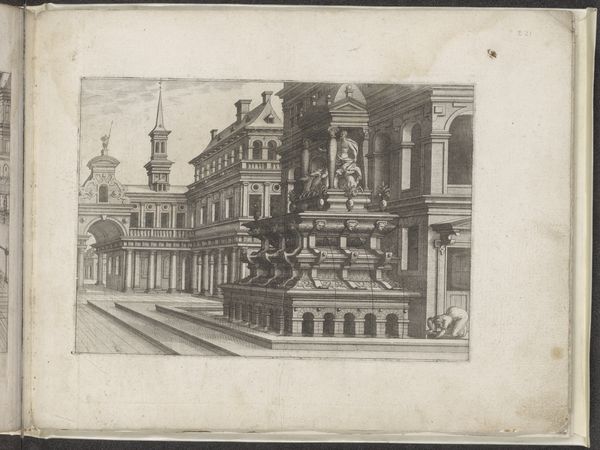
drawing, print, engraving
#
drawing
#
aged paper
#
toned paper
# print
#
sketch book
#
form
#
personal sketchbook
#
pen-ink sketch
#
pen and pencil
#
line
#
pen work
#
sketchbook drawing
#
cityscape
#
italian-renaissance
#
sketchbook art
#
engraving
#
pencil art
#
realism
Dimensions: height 431 mm, width 294 mm
Copyright: Rijks Museum: Open Domain
Curator: This is an intriguing print titled "Gebouwen op het oude Capitool te Rome," or "Buildings on the old Capitoline Hill in Rome." It’s attributed to an anonymous artist and believed to have been created sometime between 1595 and 1622. Editor: Immediately, I’m struck by how precisely the architecture is rendered. There’s a somewhat dreamlike quality despite the almost scientific precision of the linework. It’s a very static scene. Curator: I see it! There’s a stillness, yes, and a sense of architectural documentation happening here. But look at the figures placed within and around these Roman buildings – they’re like players on a stage, breathing life into what might otherwise feel like a cold, calculated study. I wonder if it's attempting to capture an idealized or imagined version of the city. Editor: And what of the idealized citizen? Do you notice how gender plays out? Women appear inside balconies while the central space below depicts only men at work or play; one could draw lines of connection between the architectural space of that society, the ways people relate to one another within it, and those lines of gender. Curator: Absolutely. These architectural forms, with their imposing columns and arches, project power and control, while that very constructed public space – its limitations and hierarchies – directly influences individual agency. Editor: The medium—engraving—itself has such interesting implications! In a sense, this technology would allow many people access to depictions of places they might never see otherwise. This allows for wide scale dissemination, especially along axes of empire and colonization, giving people further 'justifications' for domination in faraway places. Curator: I never thought about the reproduction of an image this way, I was too deep in considering how the artist had painstakingly rendered this imaginary Roman place to life. Thinking of its future proliferation, like many works, taints the pleasure of observing with its beauty and careful construction! Editor: It really asks us to reflect on what exactly that process of translating place involves – how it creates certain social relations while obscuring others. Curator: You know, examining this piece, and with your interpretations, the engraving transcends simply being a pretty picture for me. It has become a historical and cultural artifact that has its very own agency! Editor: Precisely. That shift in perspective – it’s what makes looking at historical artworks endlessly compelling.
Comments
No comments
Be the first to comment and join the conversation on the ultimate creative platform.
